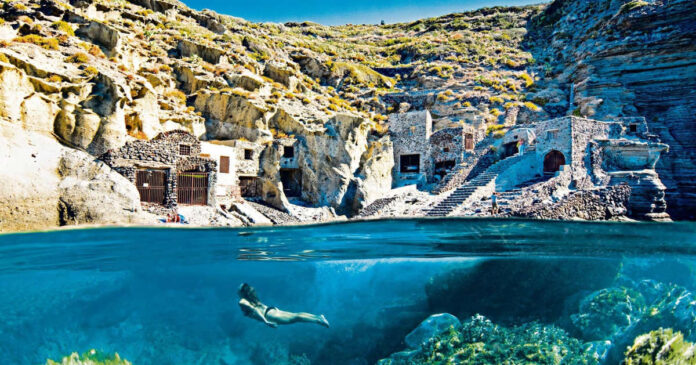You never need to look far for an excuse to plan a trip to Italy. Not only does it offer myriad festivals, carnivals and celebrations, but it also has one of the best and most varied climates in Europe – from the snow-clad winter resorts of the Dolomites, to the summer heat of Sicily and the warm glow of Tuscany in the autumn.
© Grtty
best destinations italy holidays trips when best time visit 2022 – Grtty
But what all that means is that you do need to plan with a little extra care to make sure you make the most of it. You don’t want to arrive in Venice the day after the carnival and catch the hangover rather than the party, or squeeze onto the beaches of Puglia in August, when it’s cooler, quieter and cheaper during off-season months.
So here is our guide to planning the perfect Italian holiday no matter the time of year.
January
Florence
Florence is, of course, the cradle of the Renaissance, and it’s the city’s remarkable architecture and art that are the main draw for tourists. This means long queues for several of the key museums and churches at most times of the year. But in January you can enjoy the art and the sights – most of which are indoors – entirely free of crowds. There’s great shopping to be had, too – especially during the January sales – and it’s an excellent time to make the most of the best bars and restaurants.
Where to stay: Go boutique with a room at The Place on lively Piazza Santa Maria Novella. “With its immaculate interiors, cocooning, club-like atmosphere and exceptional service, it’s the perfect Florentine pied-à-terre,” says our expert Nicky Swallow. For more recommendations, see our guide to the best hotels in Florence.
February
Venice
Always beautiful, always alluring, always romantic and never disappointing: you can’t go wrong with Venice at almost any time of year. But, while it can undoubtedly be chilly, there is a special magic to the city in winter. On clear days, the canals sparkle in the sunlight, and you can see the snow-capped Dolomites on the horizon. In February you can also choose between crowd-free sights coupled with bargain prices, or the excitement and glamour of the Carnival (from 11 to 21 February 2023).
Where to stay: The Gritti Palace on a striking Grand Canal spot. Venice expert Anne Hanley describes the hotel as initmate, elegant and grown-up, packed with antiques, frescoes and glorious Murano glass chandeliers. For more recommendations, see our guide to the best hotels in Venice.
© Provided by The Telegraph
St Marks Square best destinations italy holidays trips when best time visit 2022 – Getty
March
Sicily
It’s the amazing variety which makes Sicily so special – from smouldering Etna, to stunning baroque towns and fabulous Greek and Roman ruins. But the sights are spread all over the island so you need to spend time on the road to link them all together. So March, when the weather is just beginning to warm up, yet the roads are quiet, is a great time to consider a trip. Plan to circumnavigate the island – you’ll need two weeks, but the highlights can be squeezed into a week.
Where to stay: Monaci delle Terre Nere for Etna views. Anticipate a plum-hued main villa, cool lava-stone pool, full-scale Etna winery, sapient design mix, enticing in-house activities and home-grown organic food, says our expert Lee Marshall. For more recommendations, see our guide to the best hotels in Sicily.
Matera
This fascinating town of caves, rock churches and grottos has been transformed by new hotels, its Unesco World Heritage status – and its stint as 2019’s European Capitals of Culture (the other was Plovdiv, Bulgaria). It’s a great option for an offbeat city break, especially near the start of the year – spring comes early this far south. There’s some interesting local cuisine, too, and fine wines from the wider Basilicata region, based on some rare and historic grape varieties.
Where to stay: Get the full experience with a night at Il Palazzotto Residence & Winery, which expert Kate Bolton describes as “an intimate, romantic place where you can sip mellow wines in mellow limestone caverns and slumber in magical cave-rooms.” For more recommendations, see our guide to the best hotels in Matera.
© Provided by The Telegraph
World Heritage Site Matera best destinations italy holidays trips when best time visit 2022 – Getty
April
The Veneto
Venice and Verona are the famous draws in the Veneto, but there is so much more to enjoy. Padua makes a weekend break in its own right, as does Vicenza, home to several buildings by Andrea Palladio and arguably one of the most beautiful small towns in Italy. Palladio was also responsible for some of the grand villas built by the richest Venetian families along the Brenta canal between Venice and Padua – an excellent short cruise. Further north you find the Prosecco vineyards, and in the mountains, the winter (or summer) resort of Cortina d’Ampezzo.
Where to stay: Palazzo Valmarana Braga, designed by Palladio. The interiors feature antique furniture, frescoed walls, marble floors, centuries-old paintings and, typical for Vicenza, exposed thick ceiling beams. Our expert Rossi Thomson also highlights the rates as reasonable. For more recommendations, see our guide to the best hotels in The Veneto.
Taormina
If March is a good time to think about touring Sicily, April, when the sun is getting higher and the days are pleasantly warm, is perfect for a weekend break to this wonderful Sicilian hilltop resort. Famous for its panoramic views of the sea and Mount Etna from the ruined Roman theatre, it is also home to some of Sicily’s best hotels and restaurants. DH Lawrence came here in the Twenties and loved it – it is just as seductive a century later.
Where to stay: Belmond Grand Hotel Timeo. Nicky Swallow says: “It not only offers exceptional services and facilities, but also one of the best views in Italy, straight onto Europe’s largest active volcano. Use of the beach facilities at sister hotel the Sant’Andrea is the icing on the cake”. For more recommendations, see our guide to the best hotels in Taormina.
© Provided by The Telegraph
Taormina ancient streets best destinations italy holidays trips when best time visit 2022 – GIUSEPPE GRECO
May
Capri
Ever since the (admittedly somewhat debauched) Emperor Tiberius went to Capri to avoid the pressures of running an empire, this lovely island just off the Sorrento peninsula has been about escapism. To make the most of it today you have to do a bit of extra escaping by avoiding the crowds of day trippers who arrive by boat from mid-morning to mid-afternoon. But you can make this a positive by heading off on the footpaths or beaches when they arrive, then returning to enjoy the more peaceful the evenings.
Where to stay: Punta Tragara, “a masterpiece of million-dollar views and 1920s sophistication”, so says our expert Toni DeBella. “The hotel holds a special place in Capri’s illustrious and storied past.” For more recommendations, see our guide to the best hotels in Capri.
Puglia
Puglia is most famous for its idiosyncratic, conical-roofed trulli houses, and its fabulous masseria hotels which have been converted from traditional fortified manor houses. But the long coastline makes it a good choice for a seaside holiday, and the appeal of the historic medieval ports of Bari and Brindisi, as well as the city of Lecce are often overlooked. Because its so far south, Puglia is also great for an early or late season break. By May it will already be properly warm and the strawberries and peaches will be ripening.
Where to stay: Don Totu Dimora Storica in Salento. This 18th-century palazzo comes with sun-blushed courtyards, an achingly tempting pool and breezy four-poster bedrooms with a suprising amount of of facilities and activities, writes Charlotte Johnstone. For more recommendations, see our guide to the best hotels in Puglia.
© Provided by The Telegraph
Puglia best destinations italy holidays trips when best time visit 2022
June
Gallery: The best babymoon destinations for a relaxing pre-baby holiday (Red (UK))
Umbria
Tuscany’s great rival is just as beautiful as its neighbour, especially in the wooded foothills of the Apennines in the east of the region and the rolling landscape of the south. There are also delightful historic hill towns – Perugia, Assisi which attract their fair share of pilgrims and crowds, but also smaller Spoleto, Spello and Orvieto, just as fascinating but not nearly so well known. In June prices for villas and hotels are well below peak rates, and the countryside, flecked with myriads of poppies and sunflowers, is at its most colourful.
Where to stay: Borgo della Marmotta in Spoleto. Expert Rebecca Winke says the hotel “offers the allure of country living with the services of a high-end resort, including a pool, restaurant, spa and yoga space, and invitingly informal living spaces indoors and out.” For more recommendations, see our guide to the best hotels in Umbria.
Piedmont
Most of Piedmont comprises the foothills of the Alps which tumble down towards the Italian Riviera. It’s a beautiful landscape and especially lovely in the early summer Come for Italy’s richest culinary tradition and its finest red wine – Barolo. Piedmont takes its food very seriously; it’s home to the Slow Food movement, excellent beef and the delicious white truffle, though you’ll have to come in November to taste that – a city break in the capital, Turin, perhaps.
Where to stay: La Villa in Mombaruzzo. Kiki Deere writes that this family-run hotel is a real Piedmont delight. “Rooms are decorated with antiques and curios, there’s a swimming pool that looks out over the vineyards, and truffle-hunting trips can be organised in the autumn.” For more recommendations, see our guide to the best hotels in Piedmont.
© Provided by The Telegraph
Piedmont best destinations italy holidays trips when best time visit 2022 – Getty
July
Siena
More compact than Florence, and arguably more beautiful, Siena is one of the most unspoilt towns in Europe – architecturally much still dates from its medieval heyday. And the reason to come in July is because of another survival from that era – the extraordinary and hugely exciting Palio horse race which takes over the main square twice a year (July 2 and also August 16). You don’t have to pay a fortune to watch from a balcony window. Just come to the square a couple of hours before the race, bring plenty of water and enjoy the spectacle.
Where to stay: Il Battistero Siena. Sarah Lane says its successful juxtaposition of colourful contemporary artworks and historic prints and documents (including the original rules of Siena’s Palio horse race) give the place an atmosphere of subtle sophistication”. For more recommendations, see our guide to the best hotels in Siena.
Verona
Forget Romeo, it’s Rome that makes Verona special. You’ll find it everywhere in this ancient, compact and sophisticated city – poking out of the corner of a street, or incorporated into a Renaissance church. But the most spectacular relic of its Roman past is, of course, the amphitheatre or Arena which hosts the open-air opera festival every summer. It’s one of Europe’s great cultural institutions and a key reason to plan your visit in July.
Where to stay: Palazzo Victoria which, according to our expert Juliet Rix, is a “microcosm of Verona’s history, perfectly located equidistant from the ancient town centre and the Roman Arena where Verona’s annual summer Opera Festival is held.” For more recommendations, see our guide to the best hotels in Verona.
© Provided by The Telegraph
Verona best destinations italy holidays trips when best time visit 2022 – Luciano Mortula
August
South Tyrol
The point where Italy meets Austria and Switzerland is one of the most beautiful parts of the Dolomites and a great destination for a summer escapist holiday, whether you want to hike, bike, or just spend some time enjoying the view. And if you want to avoid too many uphill slogs, you can always use a chairlift from one of the winter resorts. The cultural confusion – many locals speak German rather than Italian – adds to the appeal, especially in the cuisine: restaurant menus might list goulash, risotto, schnitzel and pizza.
Where to stay: ADLER Lodge RITTEN for a luxury alpine retreat. Kate Bolton writes: “It’s a sanctuary for body and soul, with a sybaritic spa, a thermal pool for year-round use, unstinting food and wine, and a smorgasbord of activities – all included in the room price.” For more recommendations, see our guide to the best hotels in South Tyrol.
Campania
Naples, Pompeii, Herculaneum and the Sorrento peninsula, as well as the islands of Capri, Ischia and Proceta are the region’s most popular destinations, but they represent only the northern chunk of Campania. Head further south, beyond Salerno, the coastline flattens out into the Cilento National Park – one of the biggest in Italy, and another World Heritage Site. There are miles of sandy beaches to enjoy, as well as the Roman ruins at Paestum. Head further south still and you get to more mountainous, spectacular and remote country, little visited by tourists.
Where to stay: Albergo il Monastero in Ischia, to stay in a monastery. “Bedrooms – former monk’s cells – are simple, but the panoramic terrace is one of the most romantic spots on the island,” writes Anna Hart. For more recommendations, see our guide to the best hotels in Campania.
© Provided by The Telegraph
Paestum ruins best destinations italy holidays trips when best time visit 2022 – Getty
September
The Italian Lakes
Holidaymakers have been attracted to the lakes since Roman times, and each has its own special character and appeal. If you’re after a quieter romantic escape, you may be drawn to Lake Orta or Lake Como. Outdoorsy types should head to the northern shores of Lake Garda for canyoning and kite surfing, while Lake Iseo is well-suited to hikers and cyclists. And for opulent hotels, and grand resorts, Stresa, Pallanza, and the Golfo Borromeo of Lake Maggiore are the places to stay. The September weather is usually idyllic.
Where to stay: Grand Hotel Tremezzo, which Kiki Deere describes as elegant, stylish and fashionable, offering “sophisticated interiors combining strong colours and classical details. Sun yourself by the floating pool, sip cocktails on the terrace or zip along the lake in one of the hotel’s chic water limousines.” For more recommendations, see our guide to the best hotels in the Italian Lakes.
Amalfi Coast
There is nothing complicated about what the Amalfi Coast has to offer. Quite simply it is one long sunny, south-facing balcony overlooking the warm Tyrrhenian Sea, and is ideal for an ultra-relaxing seaside holiday, especially in spring or autumn. The roads are slow and winding, but there are plenty of boat trips along the coast. Choose between the chic hotels stacked up on the cliffs above the beach at Positano or Ravello; the livelier atmosphere of Amalfi, or one of the smaller villages such as Praiano.
Where to stay: Hotel Marincanto in Positano. Hotel expert Fiona Duncan says that every detail is executed with taste and flair and the effect is fresh and elegant. The big bonus is the private beach, which only a few Positano hotels can offer, and of course those views. For more recommendations, see our guide to the best hotels on the Amalfi Coast.
© Getty
Amalfi coast best destinations italy holidays trips when best time visit 2022 – Getty
October
Tuscany
Tuscany encapsulates everything that is most seductive about Italy – glorious landscapes, perfect climate, great art and architecture and a matchless cuisine. For the best of that cuisine, go in the autumn, when the light turns golden, the days are still warm, the rich harvest of figs, grapes, chestnuts, olives, apples, pears and pumpkins is at its peak, and fresh funghi are being gathered in the woods. A succession of local village festivals pays homage to the harvest – you’ll never enjoy a better feast.
Where to stay: Villa Cora for a “fantasy world of immaculately restored luxury,” writes Nicky Swallow. Expect superb facilities, impeccable service and a best-of-both-worlds location. “The lovely garden and pool are a calm, cool refuge after a hot, sticky day in central Florence.” For more recommendations, see our guide to the best hotels in Tuscany.
Sorrento
Amalfi is on the south, Sorrento on the north side of the peninsula that edges the great Bay of Naples. Don’t go to this historic resort for a beach holiday, however. While there is a small town beach, most of the rest is clustered along the top of the cliffs above. This is a place to enjoy the autumn sunshine, strolling between outdoor cafés or relaxing in hotel gardens. It’s also ideal for day trips to Naples or Capri (by ferry) or Pompeii and Herculaneum (by rail).
Where to stay: Maison La Minervetta – one of the “most stylish spots in the Sorrento area”, according to Nicky Swallow – which clings to a cliffside, away from the tourist hordes and directly above Marina Grande. “It has breathtaking views over the Bay of Naples towards Vesuvius and Naples itself,” she writes. For more recommendations, see our guide to the best hotels in Sorrento.
© Provided by The Telegraph
Sorrento best destinations italy holidays trips when best time visit 2022
November
Milan
In many minds Milan is defined by its famous fashion brands, and, perhaps, La Scala opera house. But it is also a great destination for a cultural trip. As well as the opera, there are several excellent art museums, including the Brera, which holds one of the best collections of Renaissance art in Italy, and the legacy of Leonardo da Vinci – notably his Last Supper and his notebooks, some of which are on display in the Ambrosiana Library. Milanese cuisine – based as much on risottos as on pasta – is a highlight.
Where to stay: Senato Hotel Milano. For shopping, this sleek boutique hotel is just a stone’s throw away from Milan’s upscale retail quarters. “The 19th-century building has belonged to the same family for four generations,” writes Kiki Deere, “and service is professional and friendly”. For more recommendations, see our guide to the best hotels in Milan.
December
Rome
The world’s greatest historic city with fabulous sights ranging from the Colosseum to Michelangelo’s Sistine Chapel ceiling, from remarkable Baroque churches to the catacombs, Rome has its appeal at almost any time of year. But winter is an especially good choice. The sights are much quieter, but it’s also a surprisingly cosy: some restaurants even have a roaring open fire in the dining room. And, the build-up to Christmas is especially atmospheric.
Where to stay: Hotel Raphael – which according to Rebecca Winke pairs the Old World grace of its wisteria and bougainvillea-covered façade with a New Millennium eco sensibilities. “The elegant vegetarian rooftop restaurant is the culmination of this eco-luxe philosophy, and sets the standard for organic fine-dining in Rome. For more recommendations, see our guide to the best hotels in Rome.
© Provided by The Telegraph
Rome best destinations italy holidays trips when best time visit 2022 – fotoVoyager
Keep in mind: Travel to Italy: latest Covid rules and practical guidance once you are there
This article is kept updated with the latest information.
Sign up to the Front Page newsletter for free: Your essential guide to the day’s agenda from The Telegraph – direct to your inbox seven days a week.










